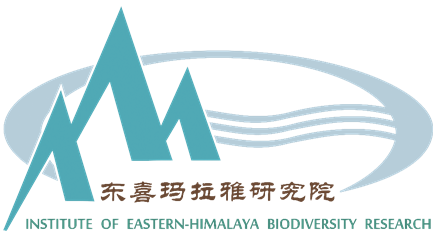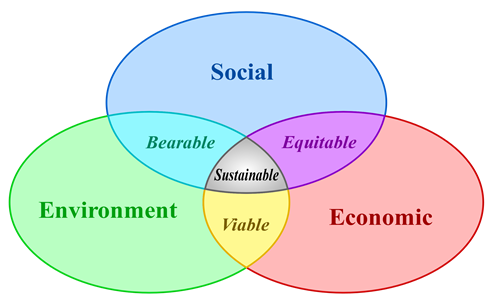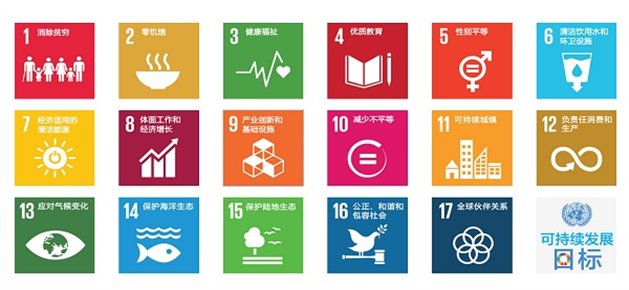24-27 August 2018

本届思想坊的主题: “洱海流域的可持续发展”
Be creative, share your ideas and build a meaningful project!
--- Inscriptions open on DingTalk---
What is this and why?
为鼓励和培养大学生原创和严谨的思维能力,引导大学生关注和发现全球可持续发展当前存在的问题,并形成的创新性建议和解决方案,东喜玛拉雅研究院和大学生实践创新部、大学生科技协会举办首届东喜玛拉雅创新思想坊。首届创新思想坊的主题为“洱海流域的可持续发展”,并以联合国全人类和全球的可持续发展目标框架为指导。
参与创新思想坊的成员首先独立提出个人想法,然后根据想法一致性划分为若干组,组内成员分享想法的基础上设计解决环境和社会经济存在严重影响的项目。每个组进行项目设计汇报,组织委员会老师和其他组成员参与讨论。创新思想坊持续时间有限,每位参与者需努力工作和团结协作,才能快速发现真实存在的环境或社会经济问题,并提出可行的解决方案。这种快速发现和提出解决方案的过程可称为“黑客马拉松”。
有改善全球可持续发展问题的想法,且乐于分享给同学和老师的同学,要想让你的Ideas变成可实施的项目方案,并改善现实社会的问题,那就请加入创新思想坊。
你可提前准备和完善你的想法,请继续阅读相关的通知和后面的文献,了解可持续发展的概念和框架。
When?
24 - 27 August 2018 (4 days)
Who can participate?
首届思想坊的参与者主要是大理大学在读本科生和研究生。
How to apply?
加入创新思想坊请于2018年8月23日00:00之前加入“创新思想坊”钉钉群 (首先需手机下载和安装“钉钉”);同时请关注东喜玛拉雅研究院微信公众号,以接受相关通知和信息。

Location:
大理大学古城校区第三教学楼5楼,东喜玛拉雅研究院507会议室。届时东喜玛拉雅研究院的所有老师都在岗,可为大家提供咨询帮助。
Geographical focus of projects:
项目设计要求围绕解决洱海流域可持续发展 (包括洱源县和大理市) 存在的问题,提出可持续的解决建议或科学研究方案。
Evaluation criteria:
可持续发展是全面的和跨学科的概念,将环境、社会和经济交汇在一起。因此,项目要求符合联合国可持续发展的总体思想,即需符合可持续发展17个目标中的1或多个目标,重点关注环境可持续发展,及社会和经济等领域。其评价标准如下:
原创和创新的想法和解决方案;
对于解决现实环境和社会经济问题具有可行性和可拓展性;
科学严谨的逻辑: 项目的重要性和必要性、如何做、需要多长时间、预期结果和潜在价值及影响;
清晰地阐述或汇报。
Certification and awards:
参与者将获得大理大学东喜玛拉雅研究院颁发的证书和礼品。同时,设计最佳疯狂想法奖和最佳设计奖,并颁发证书和奖品。
-------------------------------------------------------------------
What is sustainable development?
One of the most widely recognized definition of sustainable development comes from the 1987 report Our Common Future, also known as the Brundtland Report:
“Sustainable development is development that meets the needs of the present without compromising the ability of future generations to meet their own needs. It contains within it two key concepts:
The concept of 'needs', in particular, the essential needs of the world's poor, to which overriding priority should be given;
The idea of limitations imposed by the state of technology and social organization on the environment's ability to meet present and future needs.”
— World Commission on Environment and Development, Our Common Future (1987)
The figure below shows the three main domains of sustainable development, namely the Social, the Economic, and the Environment domains. The figure clearly shows how these three domains are interlinked. For example, we cannot develop our economy by using natural resources in a way that put in danger their regeneration, and economic development should benefit all human beings without differences in ethnicity, gender and age, and not only a chose elite.
Please check the references listed at the end of this document to learn more on the concept.

Original: Johann Dréo, translation: Pro bug catcher, - Own work Inspired from Developpement durable.jpg Translated from Developpement durable.svg, CC BY-SA 3.0, https://commons.wikimedia.org/w/index.php?curid=1587372
In September 2015, the United Nations General Assembly formally adopted the "universal, integrated and transformative" 2030 Agenda for Sustainable Development, a set of 17 Sustainable Development Goals (SDGs). The goals are to be implemented and achieved in every country from the year 2016 to 2030. You will find references on SDGs and the implications for China in the references at the end of this document. Please get familiar with 17 goals, the objectives and the indicators because they can suggest ideas on problems to tackle and the way SDG progress is monitored and measured. The 17 SDGs are the following:

Now, look at the situation of the place we live in, Dali, its beautiful landscape and rich cultural heritage. In recent year, this region has known an outstanding economic development, with new buildings and urban infrastructure being built, rapid growth of various businesses including the tourism sector, heavy population increase and the life of local people improving significantly. However, rapid economic growth doesn’t come without expenses, especially on the environmental domain. Demand of natural resources increases with population and lifestyle (it’s always the richer that consume the most) and not everybody benefits equally to this rapid development.
Sustainability science aims to assess and predict the impacts of a rapidly changing world and provide solutions to improve the quality of life of humanity, which can only be achieved by taking good care of their home. From the first images of the Earth we saw from space, we all know that our planet is limited and not infinite, and we only have one.
Some hints on problems of the Er’hai Catchment area and topic ideas
We provide here some examples of problems and questions arising in the Dali region, where innovative solutions are needed. Please note that this list is not exhaustive, and students should try to identify other issues to address.
Protection of Er’hai Lake: intensive agriculture, population increase, and poor waste management pose a threat to the healthy ecosystem of the lake.
Tourism model: Dali is a popular destination for tourism which creates income for many people. How is this massive tourism flow managed in terms of consumption, transportation, environmental and cultural awareness, distribution of income, waste management, etc.?
Regional development: population is increasing, buildings and roads are expanding… Can water and land resources be used in a sustainable way in order to provide ecosystem services for the future generations?
The quality of education, inequalities between city and countryside, between rich and poor
Economic and social inequalities between remote villages and main tourism destinations
Are men and women treated equally in society, on workplaces, in the family structure?
Are ethnic minorities considered in the regional development?
Farming system: excessive employment of land resources and the use of chemical pesticides and fertilizers
Are protected area well managed?
Cultural heritage conservation: Dali oldtown fast changing face
Energy production: renewable vs non-renewable sources, impact of hydropower
Waste management and recycling: systems, education, etc…
References (Chinese)
Wiki definition of sustainable development: https://zh.wikipedia.org/wiki/可持续发展
SDG indicators: https://unstats.un.org/sdgs/indicators/Global%20Indicator%20Framework%20after%20refinement_Chi.pdf
UNDP China MOOC on Agenda 2030, 视频-联合国开发计划署可持续发展目标: https://open.163.com/undpsdgmooc
SDG 2018 Progress Report: https://unstats.un.org/sdgs/files/report/2018/secretary-general-sdg-report-2018--ZN.pdf
UNDP China, 联合国2030年可持续发展目标: http://www.cn.undp.org/content/china/zh/home.html
SDG Wiki page: https://zh.wikipedia.org/wiki/可持续发展目标
UN website on Sustainability, 联合国促进可持续发展 : http://www.un.org/zh/sections/what-we-do/promote-sustainable-development/index.html
Syntao (consulting company for CSR service), 商道纵横官网: www.syntao.com
UN Climate Change, 联合国气候变化: https://news.un.org/zh/tags/qi-hou-bian-hua
Corporate Social Responsibility Cases, 企业社会责任项目优秀案例: http://csrcase.gongyishibao.com/
Plastic waste from take-away food, 外卖垃圾问题: http://www.xinhuanet.com/politics/2017-11/25/c_1122008240.htm
Haze in China, 中国雾霾成因、危害和解决方案: http://www.xinhuanet.com/politics/2017-11/25/c_1122008240.htm
World Economic Forum-City and Sustainability, 城市与可持续发展: https://cn.weforum.org/agenda/2013/12/1103
Carbon Trading (China), 中国碳排放交易网: http://www.tanpaifang.com/ditanjingji/
Reports: SDG #You Need to Know# 170 Daily Actions/170项日常行动 Please use the link and the password to download the two documents 链接: https://pan.baidu.com/s/1Il7kpjsZLFZyPGOxyGfdcA 密码: bjtu
Green inside: http://www.greeninside.com.tw/?p=3707
SDGs for all: https://www.sdgsforall.net/index.php/languages/chinese
References (English)
Wiki definition of sustainable development: Highly suggested!!! https://en.wikipedia.org/wiki/Sustainable_development
SDG Official Website: https://sustainabledevelopment.un.org/
SDG wiki page: https://en.wikipedia.org/wiki/Sustainable_Development_Goals
Sustainable Development Knowledge Platform for China: https://sustainabledevelopment.un.org/memberstates/china

